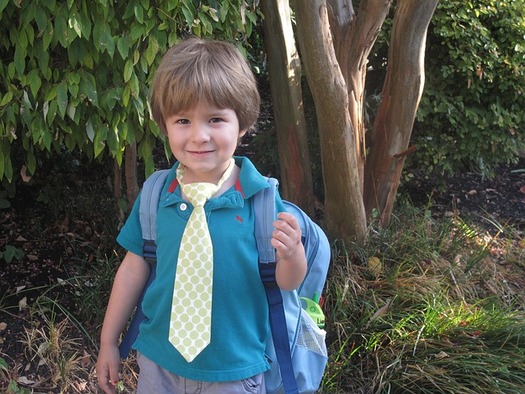
In the hustle and bustle of school days, your child’s backpack is like a trusty sidekick, carrying adventures, books, and maybe a few crumbs from lunch. Welcome to our simple guide – all about “Cleaning and Sanitizing Your Child’s School Backpack.” In these two short paragraphs, let’s explore why keeping this bag tidy is more than just wiping away spills; it’s about creating a clean and healthy space for your little learner.
Think of your child’s backpack as a magic holder of treasures and stories. In the first paragraph, we’ll chat about how this bag is not just for carrying school stuff. It’s a keeper of their daily escapades and a helper in their learning journey. We want to show you why giving this trusty bag a good clean is not just a chore but a way to make sure it stays a reliable friend throughout the school year.
See also our post on A Complete Guide on How to Clean and Disinfect School Backpacks and Supplies
The Importance of Cleaning and Sanitizing Your Child’s School Backpack
Daily Exposure
Your child’s backpack travels everywhere with them, from classrooms to playgrounds. Regular cleaning is crucial to prevent the accumulation of dirt and germs from daily exposure.
Health and Hygiene
A clean backpack contributes to your child’s overall health and hygiene. By eliminating germs, you reduce the risk of illnesses and ensure a safe environment for their school essentials.
Prolonging Backpack Lifespan
Regular cleaning not only safeguards your child’s health but also extends the lifespan of the backpack. Proper care prevents wear and tear, ensuring it remains a reliable companion throughout the school year.
Teaching Hygiene Habits
Incorporating backpack cleaning into your child’s routine teaches them valuable hygiene habits. It instills a sense of responsibility for their belongings and personal space.
A Family Endeavor
Cleaning your child’s backpack can be a family activity, fostering collaboration and instilling the importance of cleanliness. Make it a routine to involve everyone in the process.
How to Prepare for Cleaning
Emptying the Backpack
Begin by emptying the backpack completely. Remove all books, stationery, and personal items. Check every pocket to ensure nothing is left behind. This allows for a thorough cleaning process.
Reading Care Labels
Check the care labels on the backpack for any specific cleaning instructions. Different materials may require different cleaning methods, and adhering to these instructions ensures you don’t damage the backpack.
Shake Out Loose Debris
Take the backpack outside and give it a good shake to remove loose debris like crumbs and dirt. This step makes the subsequent cleaning process more effective and prevents dirt from spreading inside your home.
Securing Zippers and Buckles
Before cleaning, secure zippers and buckles. This not only protects them from damage during the cleaning process but also ensures a more thorough cleaning of all nooks and crannies.
Assembling Cleaning Supplies
Gather the cleaning supplies you’ll need, such as a soft brush, mild detergent, a clean cloth, and a gentle disinfectant. Using the right tools ensures effective cleaning without causing damage to the backpack.
See also our post on How to Prevent Cross-Contamination in Office Spaces
How to Clean the Exterior
Brushing Away Surface Dirt
Use a soft brush to gently scrub the exterior of the backpack. Pay attention to seams, pockets, and any areas with visible dirt. A gentle brushing removes surface grime without compromising the material.
Spot-Cleaning Stains
For stubborn stains, create a mild detergent solution and spot-clean the affected areas. Use a clean cloth or sponge to gently rub the stained areas, avoiding excessive moisture that may damage the backpack.
Addressing Odors
If your child’s backpack has lingering odors, sprinkle baking soda inside and let it sit for a few hours. Baking soda absorbs odors effectively. Afterward, shake out the excess and brush the interior.
Wiping Down Hard Surfaces
For backpacks with hard surfaces or decorations, wipe them down with a clean, damp cloth. Ensure the cloth is not too wet to prevent water damage. Dry thoroughly after wiping.
Air-Drying
Allow the backpack to air-dry completely before putting items back. Avoid direct sunlight, as it may cause fading. Ensure all compartments are dry to prevent the growth of mold and mildew.
Tips for Cleaning the Interior
Emptying All Pockets
Before cleaning the interior, make sure all pockets are empty. Check for any forgotten items or loose debris. This step ensures a comprehensive cleaning of every compartment.
Vacuuming the Interior
Use a vacuum cleaner with a nozzle attachment to vacuum the interior of the backpack. This effectively removes dust, crumbs, and small debris that may have accumulated.
Disinfecting the Interior
Dampen a clean cloth with a gentle disinfectant, and wipe down the interior surfaces of the backpack. Focus on areas your child’s belongings directly touch, such as the bottom and sides.
Handling Stains Inside
For interior stains, spot-clean with a mild detergent solution. Use a soft brush or cloth to gently lift the stain without saturating the material. Ensure thorough drying to prevent mold.
Dealing with Lingering Odors
If odors persist, place a fabric softener sheet or a small sachet of baking soda inside the backpack. This helps maintain a fresh scent and prevents unpleasant odors.
See also our post on How to Clean and Sanitize Your Child’s Lunchbox and Containers
Special Considerations for Different Materials
Canvas Backpacks
Canvas backpacks are durable but require gentle care. Spot-clean stains, and avoid excessive moisture. For deep cleaning, check care labels or consult the manufacturer’s recommendations.
Nylon or Polyester Backpacks
Nylon and polyester backpacks are often water-resistant. Wipe them down with a damp cloth and mild detergent. Ensure thorough drying to maintain their water-resistant properties.
Leather or Faux Leather Backpacks
For leather or faux leather backpacks, use a specialized leather cleaner. Avoid water, as it can damage the material. Regularly apply a leather conditioner to keep the material supple.
Backpacks with Electronic Components
If your child’s backpack has electronic components, such as a built-in speaker or charging port, follow specific care instructions provided by the manufacturer to prevent damage.
Personalized or Embellished Backpacks
Backpacks with personalized or embellished designs may require extra care. Avoid abrasive cleaning methods that could damage the decorations. Gentle wiping is usually sufficient.
Tips for Establishing Regular Maintenance
Setting a Cleaning Schedule
Establish a regular cleaning schedule for your child’s backpack. Aim for a thorough cleaning at least once a month, with spot cleaning for stains or spills as needed. Consistency is key.
Encouraging Personal Responsibility
Encourage your child to take responsibility for their backpack. Teach them how to identify and address spills promptly, fostering good habits that contribute to the backpack’s cleanliness.
Involving Your Child
Make backpack cleaning a collaborative effort. Involve your child in the process, teaching them the importance of maintaining their belongings and contributing to a clean and healthy environment.
Inspecting Regularly
Regularly inspect the backpack for signs of wear, loose seams, or any issues that may need attention. Addressing minor problems promptly prevents them from becoming more significant.
Replacing When Necessary
If the backpack shows signs of significant wear, or damage, or is no longer suitable for use, consider replacing it. Investing in a new backpack ensures your child’s essentials are carried in a safe and reliable manner.
Additional Tips for School Backpack Care
Avoiding Overloading
Advise your child not to overload their backpack. Overloading can strain the seams, zippers, and straps, leading to premature wear. Encourage them to carry only necessary items.
Using Backpack Covers
Consider using backpack covers, especially during inclement weather. These covers provide an extra layer of protection against rain and prevent water damage to the backpack’s contents.
Personalizing Carefully
While personalizing a backpack is fun, avoid heavy embellishments that may compromise the backpack’s structure. Opt for lightweight and securely attached decorations to maintain durability.
Storing Properly
During school breaks or holidays, store the backpack in a cool, dry place. Ensure it is empty, clean, and properly aired to prevent the growth of mold or mildew.
Seeking Professional Cleaning
For backpacks with intricate designs, electronic components, or special materials, consider professional cleaning services. Professionals can ensure a thorough and safe cleaning process.
Conclusion
As you set out to clean and sanitize your child’s school backpack, picture a backpack that not only endures the daily adventures but also becomes a symbol of care and responsibility. May these straightforward yet thorough steps help you create a clean and safe space for your child’s belongings, encouraging good hygiene habits and making sure their essentials are carried in a backpack that stands the test of time. A child’s backpack becomes a trusted companion in the busy world of a school day, carrying not just books but a world of experiences.
May your child’s backpack carry more than just books; may it also carry the spirit of a home that values nurturing, accountability, and the basic pleasures of education. Let the process be a cooperative effort, a ritual that unites the family in the pursuit of hygiene, health, and the delight of a well-maintained backpack.







